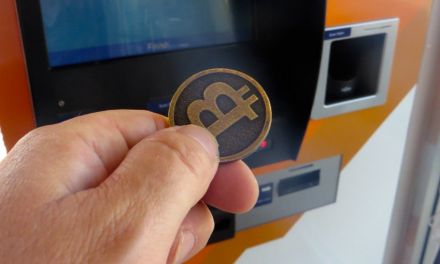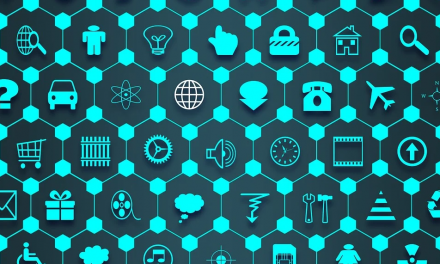Dublin – Select Report Findings:
- Mobile Edge Computing will be key for private wireless implementation
- MEC will also be important for public consumer applications, but lower priority
- 5GNR market for private wireless in industrial automation will reach $6.3B by 2027
- 5G applications market for enterprise and industrial segments will exceed $50B globally by 2027
- Global revenue for LTE based enterprise and SMB mobility apps and services will reach $7.4B by 2027
- Key 5G solution areas for business will be IoT connectivity, SMB/corporate mobility, and fixed wireless
5G will bring about fundamental structural economic changes, such as significantly lower broadband pricing as a whole, and also much greater flexibility for enterprise, industrial, and government market segments in terms of how they connect public to private networks. Future use cases for the 5G applications market are many and varied in terms of type, industry vertical focus, and requirements. Correspondingly, each scenario will have its own network configuration of requirements and parameters.
The report also evaluates supporting technologies such as Artificial Intelligence in LTE and 5G by Technology, Customer Type, and Data as a Service. The report also assesses opportunities for Blockchain technology in 5G. For example, the report provides forecasting for Global Blockchain Driven LTE and 5G Applications Market by Connection.
The commercial deployment and operation of 5G will bring very important benefits to the ICT industry. One of those will be massive Internet of Things (IoT) networks, which refers to the ability of deploying and operating IoT systems at a very large scale. As the size of IoT systems grows to large scale, their scope will also increase in terms of the impact on enterprise systems and consumers’ everyday lives.
IoT solutions will benefit greatly from the implementation of 5G as cellular providers deploy Low Power WAN (LPWAN) IoT network capabilities. Initial deployments of IoT LPWANs have been non-cellular solutions based on proprietary technologies. However, the author sees emerging standards such as Narrowband IoT (NB-IoT) assuming a dominant role for certain IoT applications. We see many industry verticals willing to pay a premium over non-cellular LPWAN, enhanced flexibility, and improved capabilities associated with IoT on 5G networks.
The use of 5G for Industrial IoT (IIoT) networks in particular will be of great importance to enterprise IIoT in certain industry verticals such as agriculture, logistics, and manufacturing. For example, we see IIoT and industrial agriculture benefits through the use of Unmanned Aerial Vehicle (UAV) operation over 5G networks due to ultra-low latency and high capacity availability.
The 5G applications market will benefit from significantly higher bandwidth for general mobility applications such as anytime, anywhere that ultra-high-speed Internet access and ultra-high definition video. 5G will also enable critical communications by way of ultra-low latency communications. Thirdly, 5G will optimize IoT networks by way of radio frequency management that meets the needs of both narrowband IoT applications as well as those that require higher bandwidth, which may be on an on-demand basis.
Manufacturing, industrial automation, and robotics are key sectors that will benefit substantially. Prior to 5G, teleoperation was largely relegated to fixed communications connections. The 5G applications market within the industrial vertical will support teleoperation anywhere there is 5G coverage, enabling many new consumer and industrial automation scenarios involving robotics. 5G enables ultra-reliable, low-latency capabilities for industrial automation.
5G is based on a transformed Radio Access Network (RAN) and Core Network (CN) for carriers. There were changes with LTE, such as leveraging IP Multimedia Subsystem (IMS) for Voice over LTE (VoLTE). However, the changes with 5G are considerably larger, and the infrastructure is much more purpose-built with an emphasis on a Services Based Architecture (SBA) approach.
This SBA approach will include tight integration with edge computing networks as identified by the European Telecommunications Standards Institute (ETSI) for integration with Multi-access Edge Computing (MEC). This will be deployed in a manner in which MEC supports 5G to preserve the tremendous throughput and latency improvements that will be gained by using 5G versus LTE.
These throughput and latency improvements will allow another important area latency-sensitive application that rely upon Ultra Reliable Low Latency Communications (URLLC). Examples of URLLC dependent apps and services including UAV operation, autonomous vehicles, teleoperation (remote control of equipment and other assets from a distance), robotics, augmented and virtual reality, tele-surgery, haptic communications, and other critical communications such as public safety apps.
5G provides substantial bandwidth where needed as well as significantly lower latency for next generation applications and services such as virtual reality-controlled teleoperation and other URLLC dependent apps and services. Previously encumbered by a combination of technology gaps and consumer readiness issues, the global 5G applications market for immersive apps such as Virtual Reality (VR) is poised for considerable growth, providing abundant opportunities for service providers, content developers, and ecosystem component providers. Coupled with the deployment of gigabit Ethernet fiber, 5G will transform the VR market, leading to a fully immersive experience with haptic capabilities becoming embedded in many applications.
5G makes IoT scalable for mobile network operators. Currently, IoT relies upon many proprietary, non-cellular means for Wide Area Network (WAN) communications. With the introduction of 5G support for “Massive IoT” via the Machine Communications support capabilities, Machine-to-Machine (M2M) networking will be able to become virtually as large as it needs to be for a given enterprise, network, system, etc. Stated differently, there will be the ability for many more low-power IoT devices with extreme coverage within a metropolitan area.
Key Topics Covered:
1.0 Executive Summary
2.0 Introduction
3.0 LTE and 5G Applications Technology and Capabilities Overview
4.0 LTE and 5G Applications Technology and Business Dynamics
5.0 Key Emerging Trend of 5G
6.0 LTE and 5G Applications Use Cases and Examples
7.0 Company Analysis
8.0 LTE and 5G Applications Market Analysis and Forecasts
9.0 Conclusions and Recommendations
10.0 Appendix
Companies Mentioned
- Airspan
- Airtel
- Alibaba
- Altair Semiconductor
- Alvarion
- Amazon
- America Movil
- Analog Devices Inc.
- Apple
- Ascom
- Asus
- AT&T
- Broadcom Corporation
- BT Group
- Cavium Inc.
- China Mobile
- China Telecom
- China Unicom
- Ciena Corporation
- Cisco Systems
- ClipBucket
- Cobham Wireless
- Colt
- Contus Vplay
- Coolpad Dyno
- Cradlepoint
- D-Link
- Deutsche Telekom AG
- Dish
- DU
- Entel
- Ericsson
- Eurotech
- Fitbit
- Fubo TV
- Fujitsu Ltd.
- Gemalto
- Harris
- HPE
- HTC
- Huawei Technologies
- Hulu
- Hytera
- Inmarsat
- Intel Corporation
- Juniper Network Inc.
- KDDI Corporation
- KT Corporation
- Leonardo
- LG Electronics
- LG Uplus
- M2M Connectivity PTY Ltd.
- MACOM Technology
- MediaTek Inc.
- Mentura Group
- Microsoft
- Misfit
- Samsung Electronics
- Saudi Telecom Company
- Sierra Wireless
- SimNet Wireless
- SingTel
- Siretta
- SK Telecom
- Sky Go
- Skype
- Snap Inc.
- Softbank Group
- Sony
Source: Research and Markets





